Djanira da Motta e Silva
Mercado da Bahia, 1959
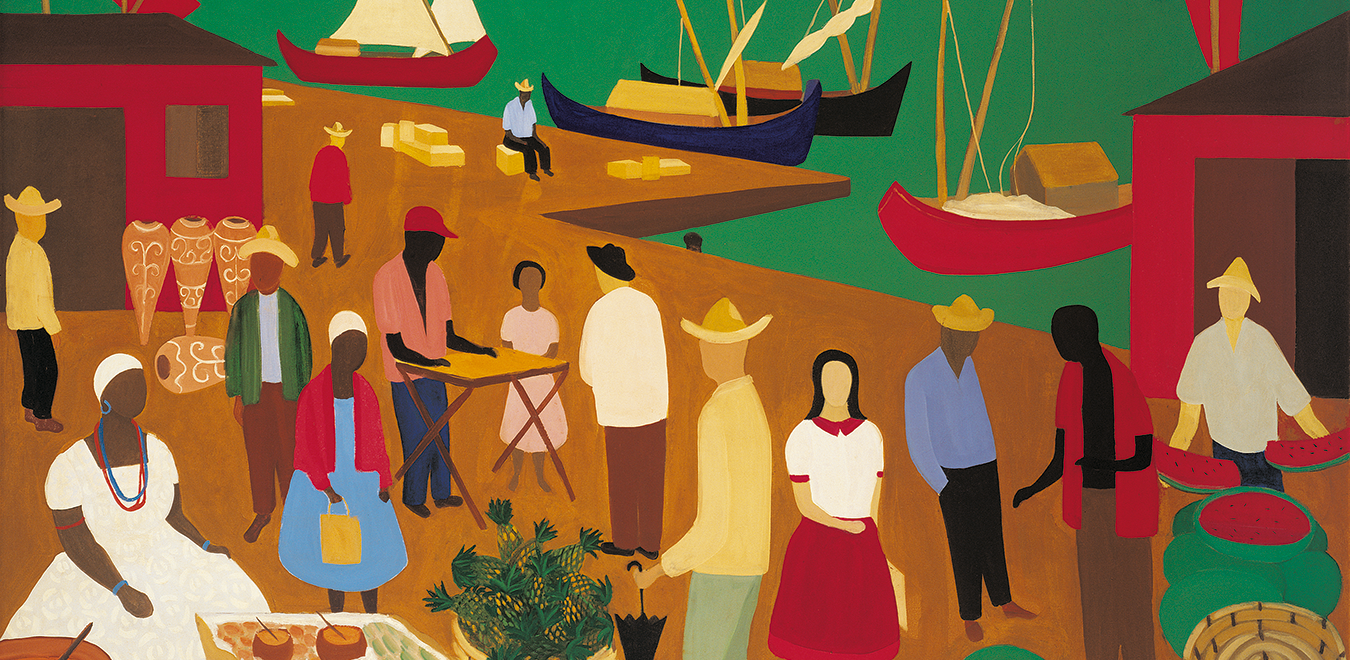
Exhibition
The exhibition Djanira: the Memory of Her People reaffirms Casa Roberto Marinho’s commitment to modern art
Jun 28 to Oct 27
R. Cosme Velho, 1105
Rio de Janeiro, RJ
Exhibition
The exhibition Djanira: the Memory of Her People reaffirms Casa Roberto Marinho’s commitment to modern art
Jun 28 to Oct 27
R. Cosme Velho, 1105
Rio de Janeiro, RJ
Djanira da Motta e Silva
Mercado da Bahia, 1959

The collaboration with the Museu de Arte de São Paulo Assis Chateaubriand (MASP) reinforces our practice of partnerships with institutions of excellence. Brazilian modern painting is a territory little explored by the new generations. The work of Djanira da Motta e Silva has enjoyed practically no attention in recent decades. One of the charms of the exhibition is to allow artworks created many years ago to become present, without intermediations. As standalone objects, they do not depend on technological conversions as films and music do.
The artworks in this show exceptionally curated by Rodrigo Moura, adjunct curator of Brazilian art, and Isabella Rjeille, assistant curator, arrive new to the eyes of today.
In putting together his collection, Roberto Marinho chose groups of artworks by his modern contemporaries, including 10 artworks by Djanira. The journalist was especially fond of the canvas Mercado na Bahia [Market in Bahia], which was centrally displayed in the library of his home. And the link with MASP dates from 1950 when the house in Cosme Velho had a festive night when the recently acquired works Portrait of Zborowski (1916–1919), by Amadeo Modiglani (1884–1920), and Portrait of Coco (Claude Renoir) (1903–1904), by Pierre-Auguste Renoir (1841-1919), were presented to Rio de Janeiro society, before heading off to São Paulo.
Djanira was an artist who began her career late in life, developing it with great determination and effort.
No Brazilian artist has ever devoted so much attention to portraying the day-to-day struggle of the less-favored layers of society. The painter’s humble origin gave her a keen sensibility for capturing these anonymous epopees, the festivals and the faith that lightened the hardship of each individual’s life.
In a recent lecture at Casa Roberto Marinho, Frederico Morais underscored the mistake of classifying Djanira’s work as primitive. A reading that only considers the themes can lead to this error. This would, however, be a case of confusing the ethnologist with the subject of her research.
The economy of her language, the use of a few concise planes, and the carefully chosen vibrant colors evince a great deal of sophistication, as would be expected in an artist of her time. It was not by chance that some neoconcrete artists sought a closer relation with Djanira’s work, just as the concrete artists incorporated the art of Volpi (1896–1988).
Initially self-taught, a seamstress, and the owner of a boarding house in Rio de Janeiro’s Santa Teresa neighborhood, Djanira became a student of Romanian painter Emeric Marcier (1916–1990) in exchange for a large room with a view of trees and Guanabara Bay. In an interview published by Rubem Braga (1913–1990) in the magazine Visão, Djanira tells us:
“Marcier explained to me that I was very different from him; so my painting had to be very different from his painting. That I shouldn’t look at his paintings, but rather pay attention to his classes, teaching me all about the technical part of painting, beginning with the preparation of the canvases.”
When she began showing her work, in 1943, at the revolutionary building of the Associação Brasileira de Imprensa (ABI) and, in 1944, at the Instituto dos Arquitetos, Djanira was recognized by important people in the art world – including Candido Portinari (1903–1962), who bought some of her works – and received the enthusiastic praise of Lasar Segall (1889–1957): “You are a true artist, do not stop painting; don’t do anything besides painting; always paint (...)".
And that’s what Djanira did.
Lauro Cavalcanti
Executive Director
Instituto Casa Roberto Marinho
![Autorretrato [Self-Portrait]](https://s3.glbimg.com/v1/AUTH_918e2c6c05e4446cb0b58fbddb0d35fc/icrm_assets/artists/main_images/92/original/03.jpg?1561147754)
Djanira da Motta e Silva
Autorretrato [Self-Portrait], 1944
Oil/wood, 48 x 35 cm | Coleção particular [Private collection], Rio de Janeiro
![Natureza morta em Santa Tereza, Rio de Janeiro [Still Life in Santa Teresa, Rio de Janeiro]](https://s3.glbimg.com/v1/AUTH_918e2c6c05e4446cb0b58fbddb0d35fc/icrm_assets/artists/main_images/111/original/22.jpg?1561148519)
Djanira da Motta e Silva
Natureza morta em Santa Tereza, Rio de Janeiro [Still Life in Santa Teresa, Rio de Janeiro], 1953
Oil/canvas, 81 x 100 cm | Coleção particular [Private collection], Rio de Janeiro
![Costureira [Seamstress]](https://s3.glbimg.com/v1/AUTH_918e2c6c05e4446cb0b58fbddb0d35fc/icrm_assets/artists/main_images/114/original/25.jpg?1561148564)
Djanira da Motta e Silva
Costureira [Seamstress], 1951
Tempera/canvas, 54 x 46,1 cm | Coleção [Collection] Museu Nacional de Belas Artes/IBRAM, Rio de Janeiro
![Colheira [Harvest]](https://s3.glbimg.com/v1/AUTH_918e2c6c05e4446cb0b58fbddb0d35fc/icrm_assets/artists/main_images/91/original/02.jpg?1561147735)
Djanira da Motta e Silva
Colheira [Harvest], 1946
Oil/canvas, 75,5 x 91,5 cm | Coleção particular [Private collection], Rio de Janeiro
![Retrato do compositor Luiz Cosme [Portrait of Composer Luiz Cosme]](https://s3.glbimg.com/v1/AUTH_918e2c6c05e4446cb0b58fbddb0d35fc/icrm_assets/artists/main_images/101/original/12.jpg?1561148228)
Djanira da Motta e Silva
Retrato do compositor Luiz Cosme [Portrait of Composer Luiz Cosme], 1948
Oil/canvas, 72 x 60 cm | Coleção [Collection] Giulia Yumi Settimi, São Paulo
![Zona norte [North Zone]](https://s3.glbimg.com/v1/AUTH_918e2c6c05e4446cb0b58fbddb0d35fc/icrm_assets/artists/main_images/113/original/24.jpg?1561148550)
Djanira da Motta e Silva
Zona norte [North Zone], 1956
Oil/canvas, 60 x 81 cm | Coleção particular [Private collection], Rio de Janeiro
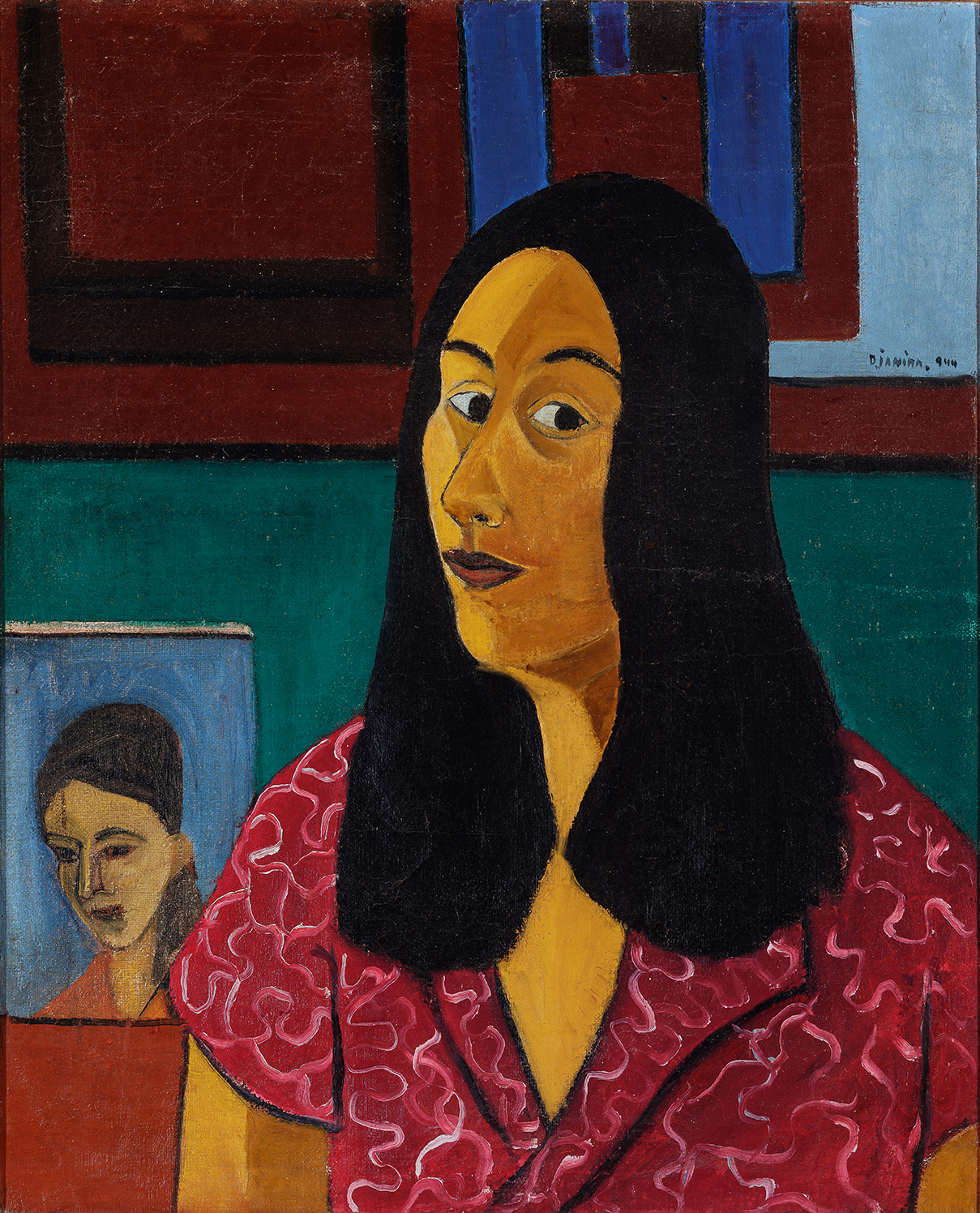
Djanira da Motta e Silva
Autorretrato, 1944
Oil/canvas, 65,5 x 53,2 cm | Coleção [Collection] Gilberto Chateaubriand, Museu de Arte Moderna do Rio de Janeiro
![Parque de diversões [Amusement Park]](https://s3.glbimg.com/v1/AUTH_918e2c6c05e4446cb0b58fbddb0d35fc/icrm_assets/artists/main_images/95/original/06.jpg?1561147801)
Djanira da Motta e Silva
Parque de diversões [Amusement Park], 1948
Gouache/paper, 47 x 57,5 cm | Coleção particular [Private collection], Rio de Janeiro
![Casa de farinha [Flour Mill]](https://s3.glbimg.com/v1/AUTH_918e2c6c05e4446cb0b58fbddb0d35fc/icrm_assets/artists/main_images/115/original/26.jpg?1561148580)
Djanira da Motta e Silva
Casa de farinha [Flour Mill], 1956
Oil/canvas, 90 x 132 cm | Coleção [Collection] Roberto Marinho, Instituto Casa Roberto Marinho, Rio de Janeiro
![Onírico [Oneiric]](https://s3.glbimg.com/v1/AUTH_918e2c6c05e4446cb0b58fbddb0d35fc/icrm_assets/artists/main_images/102/original/13.jpg?1561148338)
Djanira da Motta e Silva
Onírico [Oneiric], 1950
Oil/canvas, 70,5 x 89,5 cm | Coleção [Collection] Evandro Carneiro, Rio de Janeiro
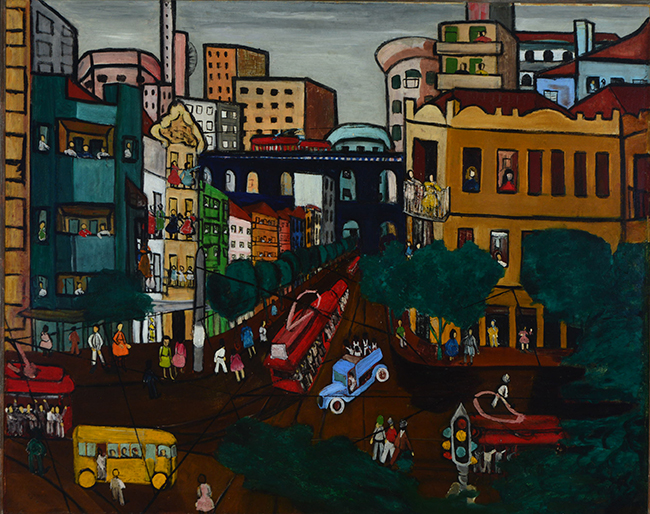
Djanira da Motta e Silva
Lapa, 1944
Oil/canvas, 81,5 x 101,5 cm | Coleção [Collection] Fundação Edson Queiroz, Fortaleza, Ceará
![Ritual da puberdade [Puberty Ritual]](https://s3.glbimg.com/v1/AUTH_918e2c6c05e4446cb0b58fbddb0d35fc/icrm_assets/artists/main_images/107/original/18.jpg?1561148441)
Djanira da Motta e Silva
Ritual da puberdade [Puberty Ritual], 1962
Oil/canvas, 81 x 116,5 cm | Coleção particular [Private collection], Brasília
![Sala de leitura [Reading Room]](https://s3.glbimg.com/v1/AUTH_918e2c6c05e4446cb0b58fbddb0d35fc/icrm_assets/artists/main_images/98/original/09.jpg?1561148173)
Djanira da Motta e Silva
Sala de leitura [Reading Room], 1944
Oil/wood, 70 x 99 cm | Coleção [Collection] Luiz Sève, Rio de Janeiro
![Vendedora de flores [Flower Seller]](https://s3.glbimg.com/v1/AUTH_918e2c6c05e4446cb0b58fbddb0d35fc/icrm_assets/artists/main_images/104/original/15.jpg?1561148384)
Djanira da Motta e Silva
Vendedora de flores [Flower Seller], 1947
Oil/canvas, 100,5 x 65 cm | Acervo [Collection] MASP | Doação [Gift] Orandi Momesso, 2015 | MASP.01624
![O sonho do menino pobre [Poor Boy’s Dream]](https://s3.glbimg.com/v1/AUTH_918e2c6c05e4446cb0b58fbddb0d35fc/icrm_assets/artists/main_images/103/original/14.jpg?1561148362)
Djanira da Motta e Silva
O sonho do menino pobre [Poor Boy’s Dream], 1948
Oil/canvas, 117 x 74 cm | Coleção particular [Private collection], Rio de Janeiro
![Noite de São João [St John’s Night]](https://s3.glbimg.com/v1/AUTH_918e2c6c05e4446cb0b58fbddb0d35fc/icrm_assets/artists/main_images/94/original/05.jpg?1561147784)
Djanira da Motta e Silva
Noite de São João [St John’s Night], 1946
Gouache/cardboard, 31 x 35 cm | Coleção particular [Private collection], Rio de Janeiro
![Autorretrato [Self-Portrait]](https://s3.glbimg.com/v1/AUTH_918e2c6c05e4446cb0b58fbddb0d35fc/icrm_assets/artists/main_images/93/original/04.jpg?1561147772)
Djanira da Motta e Silva
Autorretrato [Self-Portrait], 1945
Oil/canvas, 87 x 70 cm | Coleção [Collection] João Sattamini, Rio de Janeiro
![Fazenda de chá no Itacolomi [Tea Farm in Itacolomi]](https://s3.glbimg.com/v1/AUTH_918e2c6c05e4446cb0b58fbddb0d35fc/icrm_assets/artists/main_images/118/original/29.jpg?1561148616)
Djanira da Motta e Silva
Fazenda de chá no Itacolomi [Tea Farm in Itacolomi], 1958
Oil/canvas, 81 x 116,2 cm | Coleção [Collection] Gilberto Chateaubriand, Museu de Arte Moderna do Rio de Janeiro
![Parque de diversões [Amusement Park]](https://s3.glbimg.com/v1/AUTH_918e2c6c05e4446cb0b58fbddb0d35fc/icrm_assets/artists/main_images/96/original/07.jpg?1561147816)
Djanira da Motta e Silva
Parque de diversões [Amusement Park], sem data [undated]
Oil/canvas, 60 x 73 cm | Coleção [Collection] Museu de Arte de Santa Catarina, Florianópolis
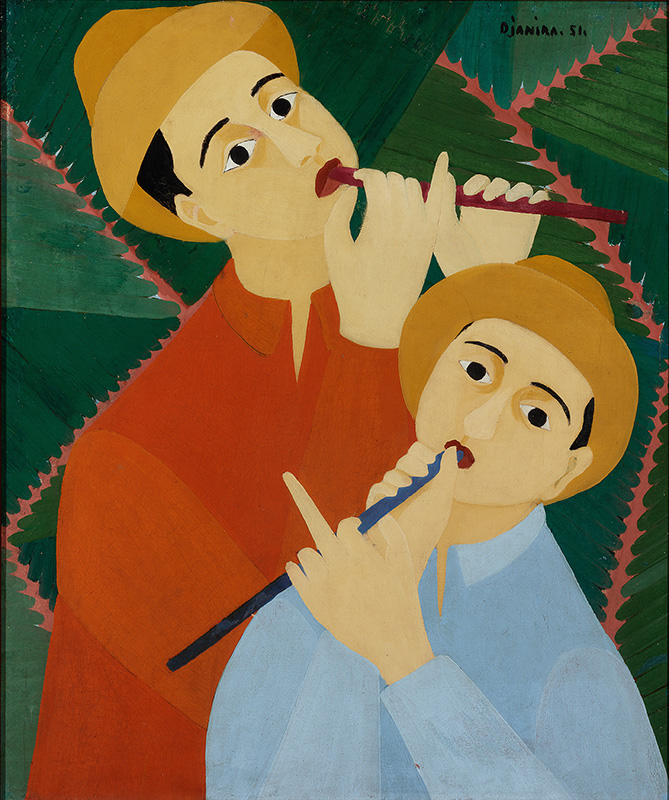
Djanira da Motta e Silva
Caboclinhos, 1951
Oil/canvas, 63 x 54 cm | Coleção [Collection] Leonel Kaz, Rio de Janeiro
![Ciranda [Circle Dance]](https://s3.glbimg.com/v1/AUTH_918e2c6c05e4446cb0b58fbddb0d35fc/icrm_assets/artists/main_images/109/original/20.jpg?1561148476)
Djanira da Motta e Silva
Ciranda [Circle Dance], sem data [undated]
Oil/canvas, 60 x 80,5 cm | Coleção [Collection] Museu de História e Artes do Estado do Rio de Janeiro (Museu do Ingá)/FUNARJ/Secretaria do Estado de Cultura e Economia Criativa/Governo do Estado do Rio de Janeiro, Niterói
![Serradores [Sawyers]](https://s3.glbimg.com/v1/AUTH_918e2c6c05e4446cb0b58fbddb0d35fc/icrm_assets/artists/main_images/117/original/28.jpg?1561148603)
Djanira da Motta e Silva
Serradores [Sawyers], 1959
Oil/canvas, 136 x 131 cm | Coleção [Collection] Roberto Marinho, Instituto Casa Roberto Marinho, Rio de Janeiro
![Parque de diversões [Amusement Park]](https://s3.glbimg.com/v1/AUTH_918e2c6c05e4446cb0b58fbddb0d35fc/icrm_assets/artists/main_images/100/original/11.jpg?1561148212)
Djanira da Motta e Silva
Parque de diversões [Amusement Park], c. 1944
Oil/canvas, 60 x 73 cm | Coleção [Collection] Victor Adler, Rio de Janeiro
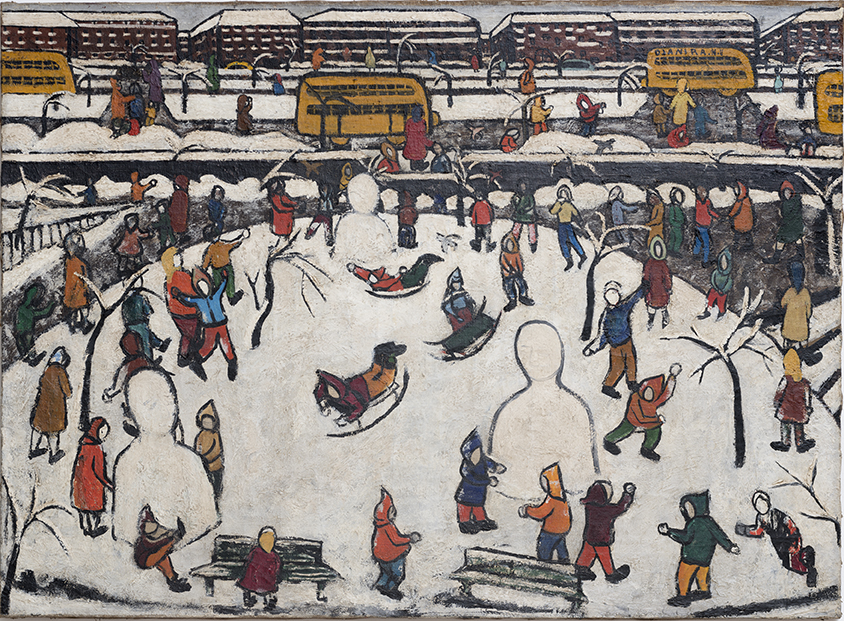
Djanira da Motta e Silva
Central Park/New York, circa 1945
Oil/canvas, 73 x 100 cm | Coleção [Collection] Fundação José e Paulina Nemirovsky, em comodato com [on loan to] Pinacoteca do Estado de São Paulo
![Empinando pipa [Flying a Kite]](https://s3.glbimg.com/v1/AUTH_918e2c6c05e4446cb0b58fbddb0d35fc/icrm_assets/artists/main_images/110/original/21.jpg?1561148492)
Djanira da Motta e Silva
Empinando pipa [Flying a Kite], 1950
Oil/canvas, 118 x 99,3 x 6,1 cm | Coleção [Collection] Banco Itaú, São Paulo
![Mulher olhando na janela [Woman Looking Out the Window]](https://s3.glbimg.com/v1/AUTH_918e2c6c05e4446cb0b58fbddb0d35fc/icrm_assets/artists/main_images/112/original/23.jpg?1561148536)
Djanira da Motta e Silva
Mulher olhando na janela [Woman Looking Out the Window], 1950
Oil/canvas, 81 x 64 cm | Coleção [Collection] João Sattamini, Rio de Janeiro
![Estudo para Índia Canela do Maranhão [Study for Indigenous Canela Woman from Maranhão]](https://s3.glbimg.com/v1/AUTH_918e2c6c05e4446cb0b58fbddb0d35fc/icrm_assets/artists/main_images/106/original/17.jpg?1561148429)
Djanira da Motta e Silva
Estudo para Índia Canela do Maranhão [Study for Indigenous Canela Woman from Maranhão], 1960
Gouache and ink/cardboard, 54 x 47,7 cm | Coleção [Collection] Museu Nacional de Belas Artes/IBRAM, Rio de Janeiro
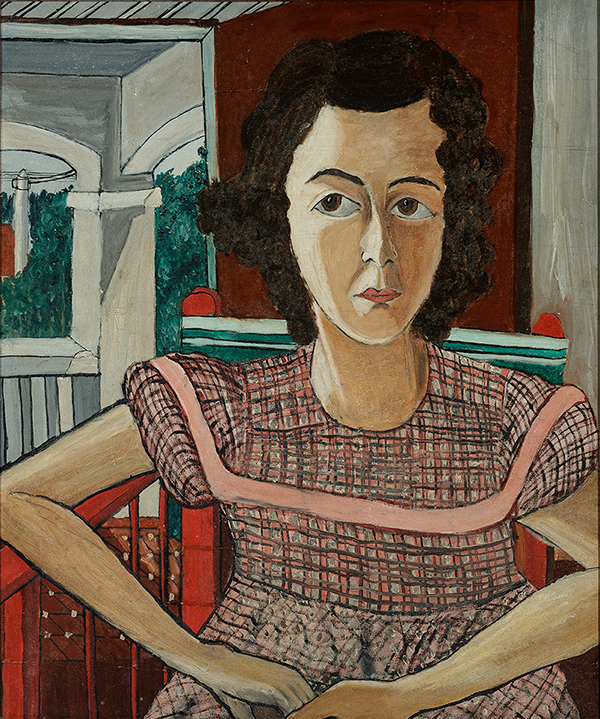
Djanira da Motta e Silva
Sem título | Untitled, sem data | undated
Oil/canvas, 55 x 46 cm | Coleção [Collection] João Sattamini, Rio de Janeiro
![Folia do divino [Festival of the Divine]](https://s3.glbimg.com/v1/AUTH_918e2c6c05e4446cb0b58fbddb0d35fc/icrm_assets/artists/main_images/105/original/16.jpg?1561148406)
Djanira da Motta e Silva
Folia do divino [Festival of the Divine], 1960
Oil/wood, 155,8 x 216 cm | Coleção [Collection] Ronaldo Cezar Coelho, Rio de Janeiro
![Cesteiro no 2 [Basketry #2]](https://s3.glbimg.com/v1/AUTH_918e2c6c05e4446cb0b58fbddb0d35fc/icrm_assets/artists/main_images/116/original/27.jpg?1561148592)
Djanira da Motta e Silva
Cesteiro no 2 [Basketry #2], 1957-58
Oil/canvas, 91 x 116 cm | Coleção [Collection] Vera Moreira da Costa, São Paulo

Casa Roberto Marinho
Rio de Janeiro - APR 24 TO JUN 22 2025
Trusteeship: Elizabeth Jobim

Casa Roberto Marinho
Rio de Janeiro - APR 24 TO AUG 10 2025
Trusteeship: Paulo Venancio Filho

Casa Roberto Marinho
Rio de Janeiro - DEC 14 TO MAR 30 2025
Trusteeship: Lauro Cavalcanti

Casa Roberto Marinho
Rio de Janeiro - AUG 15 TO NOV 17 2024
Trusteeship: Cristina Canale

Casa Roberto Marinho
Rio de Janeiro - AUG 15 TO NOV 17 2024
Trusteeship: Pollyana Quintella

Casa Roberto Marinho
Rio de Janeiro - MAY 11 TO JUL 21 2024
Trusteeship: Lauro Cavalcanti, Marcia Mello e Victor Burton